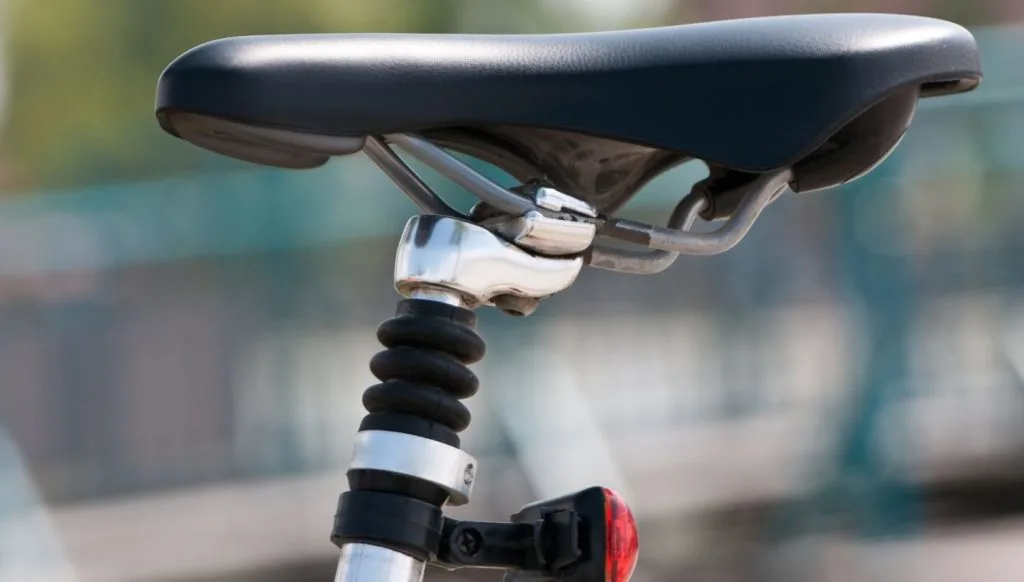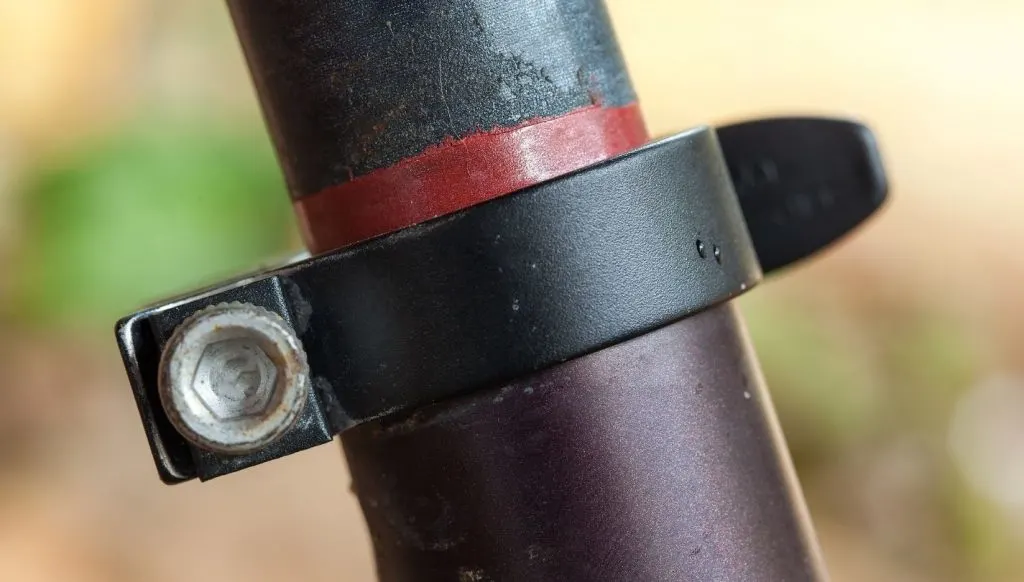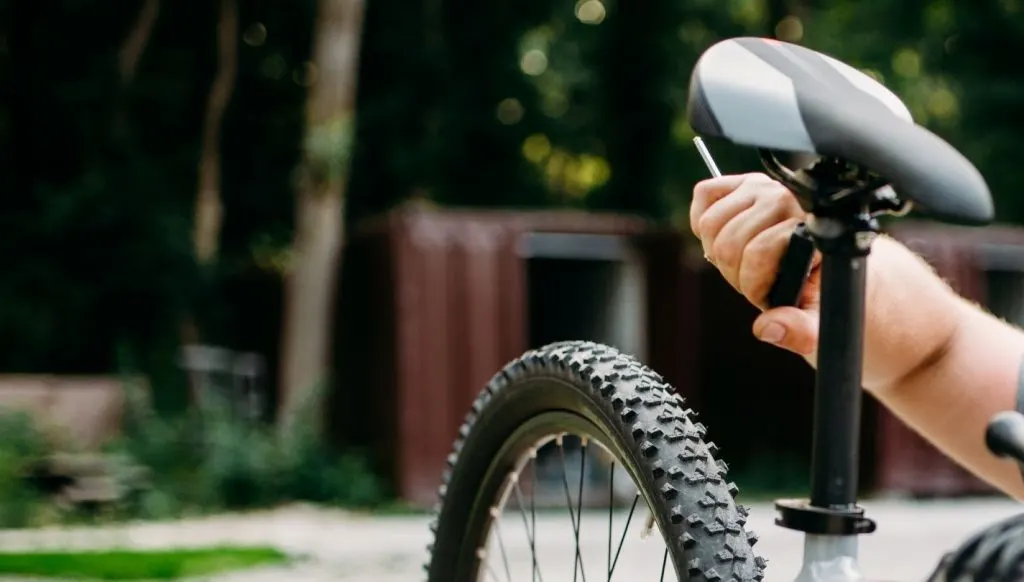
Biking can be a fun hobby, but it can also be necessary for many people as it could be their only means of transport. Either way, you need to know how to look after your bike to ensure it lasts you as long as possible. So, do you need to grease your bike seatpost?
Greasing your bike’s seatpost is recommended for maintaining your bike. Greasing the seatpost can protect it from corrosion due to exposure to the elements and help you avoid problems like seizing your seatpost. You should grease your seatpost every five months for maximum protection.
Can you use regular grease on all bike seatposts? What process should you follow to grease your seatpost correctly? What is the best grease to use on your seatpost? Let’s get to these questions and more in this interesting article!
Should You Grease A Bike Seatpost?
Biking is a big part of a lot of people’s lives. Whether you use your bike for sport or transport, your bike will need some maintenance. One aspect of this Bike maintenance is greasing the bike’s seatpost.
When you first buy your bike, the seatpost should already be greased for your convenience, but once you have used the bike for a few months, you will need to apply a new layer of grease on the seatpost.
Many manufacturers recommend that you grease the bike’s seatpost regularly to avoid any problems like the seatpost seizing up during your use of the bike. These problems can impact your user experience and damage your bike if not resolved. So, it is recommended that you regularly grease your bike’s seatpost.
Now that you know it’s a necessary part of bike maintenance, what should you be greasing it with? Let’s find out…
Should I Use Regular Grease On All Bike Seatposts?
This will depend on what material your bike is made from. Some bike seatposts should not be greased with regular bike grease but rather lubricated with another substance. Let’s go through which bike seatposts need to be greased with standard grease and which ones don’t.
Carbon Bike Seatposts
If your bike is made from carbon, you might want to hold off on the grease. The carbon components that your bike is comprised of need a different treatment than a bike made from steel or aluminum.
You should not use regular grease on the seatpost for bikes made from carbon. There are two main reasons for this. Firstly, when you use standard grease on a carbon seatpost, the clamp for the seatpost will need to be tightened to a greater degree than what the carbon post can handle.
This will need to be done to prevent the seat from moving while the bike is in use. While aluminum and steel bike seatposts can handle the stress of this extra compression perfectly fine, the seatposts that are made from carbon are not.
In fact, carbon is known for its low resistance to this additional compression needed by the clamp to keep the seat in place. Therefore, you should not use regular grease on your carbon seatpost because the regular grease could damage the carbon itself.
Some people will oppose this statement, but results have shown that using standard grease on carbon can harm the carbon. When the carbon components of the bike, like the seatpost, are exposed to regular bike grease, this can cause the carbon to bloat. This bloating can make these carbon components lose their integrity and break easily.
So, you should never use regular grease on your carbon bike seatpost, but rather use a lubricant made specifically for carbon.
Steel Bike Seatposts

If your bike seatpost is made from steel, you’ll need to grease your seatpost regularly with regular bike grease. Steel bike seatposts can malfunction when they are not properly lubricated with grease during your bike’s maintenance.
Bike manufacturers recommend that you grease a steel bike seatpost to ensure you get maximum comfort when using your bike. This will also help ensure you have no problems, like your bike seat seizing, which will take some time and effort to fix. So, steel bike seatposts should be greased with regular grease.
Aluminum Bike Seatposts
Aluminum bike seatposts should be greased with regular bike grease during your bike maintenance. Even though aluminum doesn’t rust like steel and other metals, it can still corrode when exposed to the elements while using your bike.
However, you don’t need to use as much grease on an aluminum bike seatpost as on a steel one, as aluminium is known for its ability to resist deep corrosion. This is why many newer bikes are made from aluminum, as they tend to last longer and suffer fewer problems in the long run.
Here’s a quick table to summarize:
| Bike Seatpost Material | Greasing Material | Recommended Product |
|---|---|---|
| Carbon | Lubricant specifically for carbon bikes | Carbon Paste (Amazon link) |
| Steel | Regular bike grease | Marine grease (Amazon link) |
| Aluminium | Regular bike grease | Valvoline (Amazon link) |
Let’s get into a little more detail about what would happen if you didn’t grease your seatpost, how to do it correctly, and then we’ll discuss some great bike grease options for your particular bike…
Why You Should Grease Your Bike Seatpost
It is recommended that you grease your bike’s seatpost, but why should you do this? Will your bike suffer if you don’t grease the seatpost during the bike’s regular maintenance?
Placing a thin coating of grease on your bike’s seatpost helps protect the seatpost from the environment you use the bike in. This can help prevent the bike post from rusting through metal oxidation due to exposure to the elements.
If your bike seatpost doesn’t have this thin layer of grease, your seat could seize, and the post could get stuck in the shaft. This will affect your ability to adjust the seat to your liking, impacting your riding experience.
If you don’t fix this problem, this could lead to further oxidation on the seatpost, weakening the metal, which could cause the post to break entirely, requiring a replacement. It is best to avoid this completely and grease your bike’s seatpost.
So how often should you really be doing it..?
When To Grease Your Bike Seatpost
Greasing your bike seatpost needs to be done for the longevity of your bike, but when should you grease it? The frequency you will need to grease your bike’s seatpost will depend on:
- where you live
- what your bike is made from
- how you store your bike when it’s not in use
For example, if your bike has an aluminum seatpost inserted into a steel bike frame, and you usually ride it in bad weather conditions, you will need to check the grease every 2 to 3 months. If your bike seatpost and frame are aluminum, you only need to re-grease the seatpost a few times a year.
However, it is wise to check the grease on your seatpost more often than is needed, as this can help you avoid possible problems in the future. As a general rule of thumb, you should check the grease at least once every 4 to 5 months and re-grease every five months.
As mentioned above though, if you have a steel frame in particular, and live in wet and windy weather conditions, it’s best to check it every 2 months (especially if you store your bike outdoors).
Now you know that greasing your bike’s seatpost is a good idea, how do you go about greasing it properly? Let’s break it down…
How To Grease A Bike Seatpost
Here’s a step by step breakdown of how to grease your bike seat post:
- Step 1 – You need to use a marker and mark off the depth that your seatpost is in the frame’s shaft, where it’s comfortable for you. Once you have marked the seatpost, you can remove the seatpost from the frame.
- Step 2 – Wipe away the old grease from the seatpost using an old cloth.
- Step 3 – Using a thin paintbrush or an old toothbrush, apply a light coating of grease to the seatpost, but stop when you reach your marker on the post. It’s unnecessary to grease the part of the seatpost that will stick out the bike frame.
- Step 4 – With the same toothbrush or paintbrush, place a thin coating of grease inside the shaft of the bike frame where the seatpost goes in.
- Step 5 – Put the seatpost back into the bike frame, and wipe off any excess grease. Your seatpost should now be sufficiently greased.
What Grease To Use For A Bike Seatpost

Knowing how to grease your bike’s seatpost is only one part of the equation. You also need to ensure you use the right grease for your seatpost’s material.
Using the right grease or lubricant for your seatpost is important, as this will ensure your seatpost is protected from the elements and prevent any future problems. Let’s go through the best grease or lubrication for the different materials seatposts are made from:
Grease For Aluminum & Steel Bike Seatposts
Aluminum and steel seatposts can both be greased with the same grease, as they won’t be harmed by regular grease. These seatposts don’t have any synthetic components, so you don’t need to use high-end grease to protect them.
With seatposts that are made from aluminum or steel, a general-purpose grease that you can buy from mechanics or car supply stores will be perfect for your seatpost. Something like this one on Amazon would work great.
If you have a seatpost made from either of these materials and live in a town close to the sea or a location with a lot of rain, you could use marine grease to be safe, as this will offer added protection from the water. Here’s a great one on Amazon from the reputable brand WD40 that works great on bikes.
NOTE: It’s not a good idea to use regular WD40 for greasing bike seatposts, as discussed later in this article.
Lubricant For A Carbon Seatpost
As mentioned earlier, seatposts made from carbon require different care than those made from steel or aluminum, and you should not use regular grease on carbon seatposts. So, what do you use to lubricate the carbon seatpost?
You should use a carbon paste for carbon seatposts to lubricate them and protect them. If you cannot find a carbon paste, you can go to your local bike store and ask them for carbon-specific lubrication, and they will suggest the best one for your needs.
Amazon have one here that is suitable for carbon bikes.
Can I Use WD40 On My Bike Seatpost?
Using WD40 as grease on your seatpost is not recommended. WD40 is a great lubricant and can help moving components in machines work better and more smoothly, but WD40 offers no protection from corrosion due to the elements.
If you use WD40 as grease on your bike’s seatpost, the seatpost will start facing some problems and could get stuck in your bike’s frame due to corrosion. It’s much smarter to use proper grease for this job.
Why Choose Grease Over Other Lubricants For Certain Bikes?
If you have a bike seatpost made from steel or aluminum, you might be wondering why you should use grease over other lubricants on the market to grease your seatpost. Well, grease is a semi-liquid compound and has a high viscosity.
This high viscosity of the grease makes it better than other lubricants like oil as it can offer more protection from the environment as it doesn’t run off the seatpost and pool in the frame.
The grease will cling to the seatpost and protect it from the elements, preventing corrosion better than other lubricants. You only need to apply a light layer to receive this protection.
There is another reason why you should use grease over other lubricants for your seatpost. This is because, unlike the cogs, chains, and chainrings on your bike, the seatpost gets inserted into the bike’s frame and is protected from debris, dust, and other particles that would normally stick to the grease if it was exposed.
All this means that using grease on your seatpost will protect your seatpost more than other lubricants, increasing its life span without dealing with dirty grease.
How To Stop A Bike Seatpost Slipping
Many people avoid greasing their bike’s seatposts as they don’t want their seat slipping when the bike is in use, as this can be a frustrating problem.
If your seat is slipping after you have greased your seatpost, then this could be because you are using too much grease.
The seatpost only requires a very thin layer of grease to protect it from the environment, so you don’t need to apply as much grease as you think. Next time, apply less grease, but for now, you can tighten the clamp more to secure the seat better.
Conclusion
Greasing your seatpost is a great idea and should be done with your bike’s regular maintenance. Greasing the seatpost will help protect the post from corrosion and will help prevent other problems like your seatpost getting stuck in your bike’s frame.
NOTE: For a comprehensive guide on general maintenance of your bike, check out my article here.
For seatposts made from steel and aluminum, you can use general-purpose grease, but with a seatpost made from carbon, you will need to shop around for a carbon-specific lubricant that will protect your seatpost.
Hopefully, this article has improved your understanding of the importance of greasing your seatpost. Good luck with greasing your seatpost!
